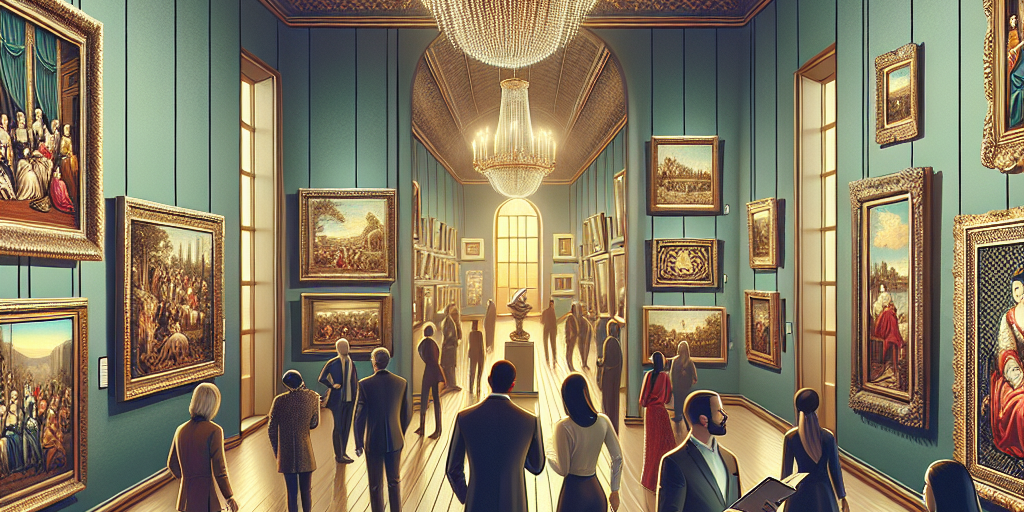Title: Art and Collectibles: The Hottest Asset Class for Savvy Investors
In the ever-evolving world of investment, where traditional stock markets and real estate have long dominated the landscape, a burgeoning asset class is capturing the attention of savvy investors: art and collectibles. Once confined to connoisseurs and aficionados, the art market has emerged as a vibrant realm offering not only aesthetic gratification but also significant financial opportunities. As investors seek to diversify their portfolios, the potential of art and collectibles as an asset class is being reevaluated and increasingly embraced.
### The Rise of Art and Collectibles
In recent years, the rise in the valuation of art and collectibles has been nothing short of remarkable. According to the Deloitte Art & Finance Report, the global art market saw sales reach an estimated $65 billion in 2021, demonstrating its resilience and adaptability in the face of economic challenges. This growth can be attributed to several factors, including the digital revolution, increasing global wealth, and the evolving perception of art as an investment vehicle.
### The Digital Revolution: NFTs and Beyond
One of the most transformative developments in the art and collectible space has been the advent of digital art and Non-Fungible Tokens (NFTs). NFTs have democratized art ownership, allowing a broader audience to access and invest in digital art pieces. Platforms like OpenSea and Rarible facilitate the buying, selling, and trading of NFTs, creating a dynamic ecosystem where digital artistry flourishes alongside traditional forms.
Moreover, NFTs have introduced programmable art with elements of uniqueness and scarcity verified on blockchain networks. This not only protects the authenticity of digital art but also opens up new revenue streams for artists and value appreciation for investors. As digital natives continue to participate in this digital revolution, NFTs are well-positioned to be a cornerstone of this burgeoning market.
### Diversification and Portfolio Stability
Investors are increasingly recognizing the potential of art and collectibles to diversify their portfolios. Unlike stocks and bonds, art is often less correlated with traditional financial markets. During times of economic uncertainty or inflationary pressures, art has served as a store of value, providing stability when other asset classes falter. This characteristic makes art and collectibles an appealing option for those seeking to mitigate risk and enhance portfolio resilience.
### Global Wealth and Emerging Markets
The rise of global wealth, particularly in emerging markets, has also fueled interest in art and collectibles. Countries such as China, India, and Brazil have seen increasing numbers of high-net-worth individuals with a keen interest in acquiring art both for personal enjoyment and as an investment. These collectors are not only driving demand for masterpieces but are also encouraging the appreciation of local artists, thereby contributing to the global art ecosystem.
### Art Investment Funds and Fractional Ownership
To make art more accessible to a broader range of investors, art investment funds and platforms offering fractional ownership have emerged. These funds pool capital to acquire high-value works, providing investors with fractional shares and reducing the barriers to entry. This democratisation of art investment allows individuals to participate in the art market without the burden of acquiring entire pieces, thus widening the investment pool and increasing market activity.
### Challenges and Considerations
While the art and collectibles market offers enticing opportunities, it is not without its challenges. Investors must navigate issues such as market liquidity, valuation transparency, and the costs associated with acquisition and storage. Additionally, art markets can be opaque, with valuations often steeped in subjective criteria influenced by trends, artist reputation, and historical significance.
Moreover, while NFTs present an exciting frontier, the digital art market is still maturing, and investors face risks associated with technological obsolescence, platform security, and regulatory uncertainties.
### Conclusion
As the art market continues to innovate and expand, art and collectibles stand out as one of the hottest asset classes for savvy investors. The fusion of traditional allure with cutting-edge technologies offers diverse avenues for engagement and opportunity. By incorporating art and collectibles into investment strategies, investors not only diversify their portfolios but also engage with a cultural paradigm that is dynamic and endlessly fascinating. As with any investment, due diligence and a keen eye for emerging trends will be crucial in unlocking the full potential of this thriving asset class.







